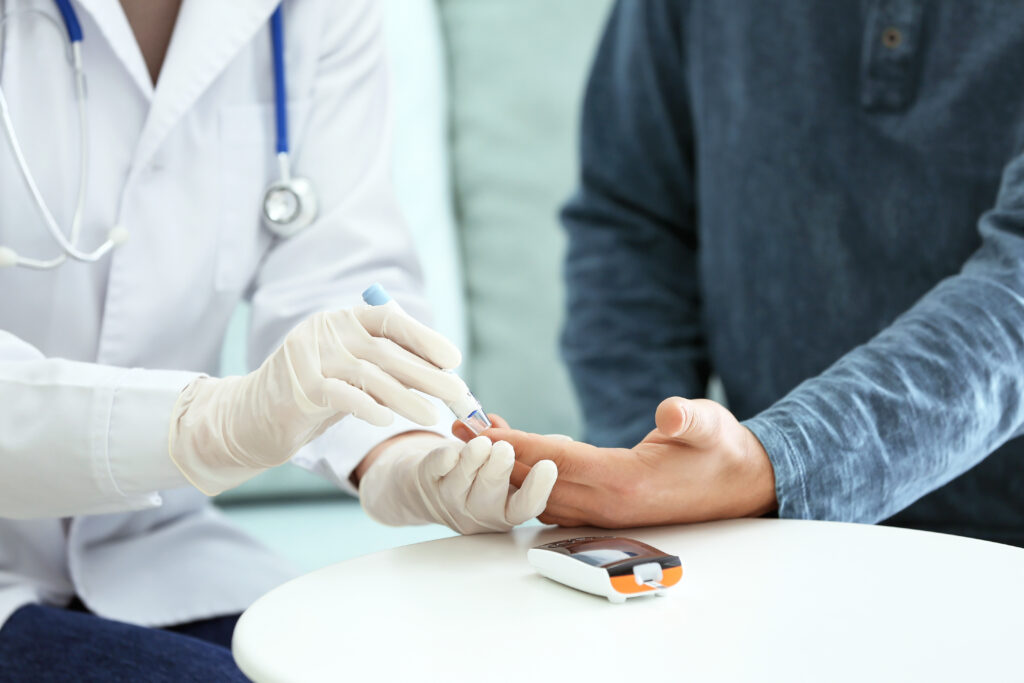Diabetes is one of the most common chronic diseases in the world. In Spain, nearly 6 million people suffer from some type of diabetes and more than a third of those affected have not been correctly diagnosed. Although it can appear at any age, it is a disease that affects a higher percentage of people over 65 years of age, with a special prevalence in those over 75.
The first symptoms of diabetes are mild and manifest themselves progressively, so in elderly people it is essential to have a medical follow-up and routine controls to detect it early.
Once diagnosed, and with the appropriate medical treatment, only minor adjustments in diet and lifestyle are needed to live with diabetes. Below we will see how diabetes is detected and the difference between type I and II diabetes mellitus.
How is diabetes detected?
Although it is a well-known disease, the symptoms of diabetes in the elderly can be confused with other ailments or even with the ailments of old age.
What are the first symptoms of diabetes?
People with diabetes do not produce enough insulin in their pancreas or their body does not use insulin effectively. This results in the body not metabolizing glucose properly and, consequently, an increase in the diabetic patient's blood sugar.
There are several types of diabetes, the most frequent being type 1 diabetes and type 2 diabetes.
Symptoms of type 1 diabetes
Type 1 diabetes is due to an autoimmune response of the body and is most prevalent in childhood and adolescence. Its symptoms may appear suddenly, some of them are:
- excessive urination and in small children may wet the bed at night
- rapid weight loss
- mood swings and irritability
- feeling of weakness
- vision problems
Symptoms of type 2 diabetes
Although in each person the disease may manifest itself differently, the defining symptoms of type 2 diabetes are:
- increased thirst and dry mouth
- frequent urination
- increased fatigue
- recurrent sores and wounds that take time to heal
- blurred vision
- tingling in feet and hands and sensation of numbness
When these symptoms appear, it is advisable to go to the doctor's office to perform the tests indicated for the diagnosis of diabetes and, if so, to start the prescribed treatment to control the diabetes and avoid the appearance of complications.
How to live with diabetes?
Diabetes is a chronic disease that, with the right treatment and routine medical controls, allows people with diabetes to continue with their lives normally. A healthy lifestyle that avoids sedentary lifestyles and promotes a good diet are also essential for living with diabetes.
Periodic medical check-ups
For both the diagnosis and follow-up of the disease, it is essential to have a medical team and clinical professionals who regularly monitor the evolution of the diabetes and resolve all the questions and concerns that the patient or family members may have.
Monitoring medical treatments
In elderly and/or dependent people, it is especially important to follow up on compliance with the medical treatment prescribed for the control of diabetes. Telephone reminders for taking medication is an effective way to avoid forgetfulness and absent-mindedness.
Measurement of blood sugar levels
After diagnosis, a new habit in the life of a person with diabetes is frequent blood sugar measurement. Measuring blood glucose with a glucometer daily, or weekly, helps patients with diabetes keep glucose levels under control.
Type of power supply
Establishing a varied and balanced diet is fundamental in the evolution of diabetes. Habits such as planning the menu and maintaining a fixed schedule of meals will make it easier for the diabetic patient to have a healthy and complete diet. When in doubt about foods indicated for diabetes, it is advisable to consult a health professional.
Active life
Regular physical activity is recommended for all people, regardless of their age and state of health. In older people small activities such as walks, alone or in company, climbing stairs and, in general, maintaining an active life contribute to maintaining muscle tone. Likewise, there are certain exercises such as tai chi or yoga which, in addition to being a physical activity, promote the patient's relaxation.
Living with diabetes can be a daily challenge, but with the right help, it is possible to keep the disease under control and lead a full and active life. Our Telecare services are an excellent tool to help you manage your diabetes and feel at ease. With our medication planner, you never have to worry about forgetting to take your medications on time. Plus, our glucose test reminder schedule will help you monitor your blood sugar levels on a regular basis. And if you need to talk to a healthcare professional about your concerns or questions, our immediate telephone consultation is available 24 hours a day, 365 days a year. With SICOR Telecare El Corte Inglés, you can be sure you'll always have the help you need to manage your diabetes effectively and live a healthy, fulfilling life.

